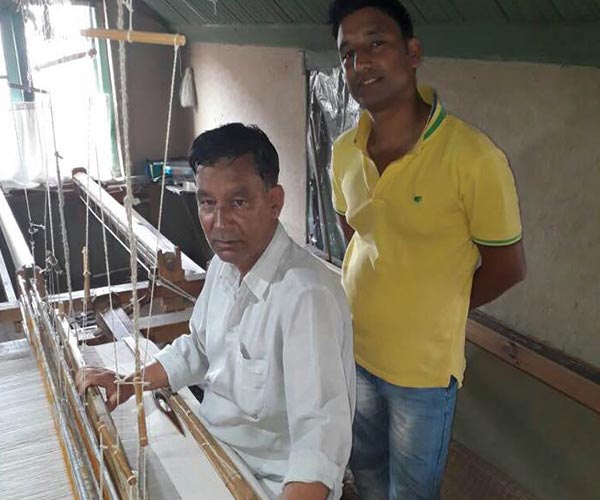“Jabse hosh sambhala hai, tabse kargha ka kaam kar raha hoon,” (Ever since i remember, I have been working on the handloom) says Hafiz Anwar who is a third generation weaver in the village of Baragaon. His grandfather migrated here from nearby Sehri village when business was booming. Sehri also happened to be his wife’s native village.
According to Anwar, since last 15 years because of rising cost of yarn, cost of production went up and profits decreased. Back then, the weavers used to mostly weave ‘gamchas’ (native stoles) and sell in the local haat (village market). There were no middlemen involved and they would get all the profits. Over time, owing to the advent of power looms, rising cost of living, local markets gradually fizzled out. Wages are low now – for every meter of cloth woven they earn between Rs.9-12. One family weaves around 10-15 mts a day. A daily earnings of maximum Rs.150 a day. “Tarakki nahi hai. Dal roti khake guzaara chal raha hai.” (We have to survive on basic food because of lack of earnings) With demand being slack, Anwar has no work for 15 – 30 days. Most often Anwar weaves stoles ( the less expensive variety which sells for Rs.100-150 in markets like Sarojini- Lajpat in Delhi) and makes Rs15/stole. For any small defect, his payment is deducted and the defective piece are rejected. Anwar does not want his children to practice handloom weaving but given the lack of finances to provide for a sound education he is not sure of what the future holds for them. “ Hamari samajh mein nahi aata hai ki bhavishya banega.” (We don’t know what the future has in store for us)


